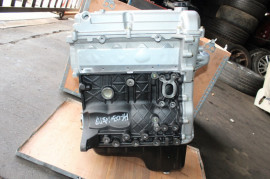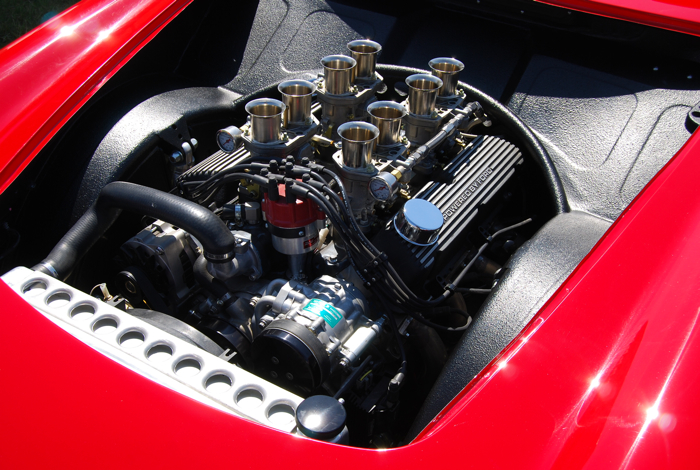Where to Discover the Best Opel Corsa Engine for Substitute
Where to Discover the Best Opel Corsa Engine for Substitute
Blog Article
Checking Out the Inner Operation of a Compact Car's Engine System
As motorists, we commonly take for provided the complex procedures that take place within the confines of our automobile's engine system. In this exploration of a small automobile's engine system, we will certainly unravel the inner workings of this mechanical symphony, dropping light on the enigmas that drive us ahead on our daily journeys.
Combustion Process Introduction
The burning process in a compact car's engine system is an essential system that effectively transforms gas right into energy to power the car. This process takes place within the burning chamber of the engine, where gas and air mix, ignite, and create controlled surges. The combustion process includes 4 main phases: consumption, compression, power, and exhaust.
During the consumption stage, the piston relocates downward, reeling in a combination of air and gas into the combustion chamber. The following phase, compression, includes the piston relocating upwards, pressing the air-fuel mix to increase its potency. Consequently, in the power stage, the ignition system ignites the pressed mixture, leading to a quick expansion of gases that forces the piston pull back. This descending activity generates the power required to drive the vehicle. In the exhaust phase, the scorched gases are expelled from the burning chamber through the exhaust shutoff, preparing the chamber for the following cycle. This cyclic combustion procedure is fundamental to the operation of a small automobile's engine system, making certain reliable power conversion for propulsion.
Piston and Cyndrical Tube Communication

The piston's precise fit within the cylinder is essential for keeping ideal compression and protecting against power loss during burning. Limited clearances between the piston and cylinder walls make certain efficient securing, permitting the piston to move efficiently without permitting gases to leakage past. Appropriate lubrication is likewise important to minimize rubbing and wear in between these elements, enhancing long life and efficiency.
In addition, the layout and materials made use of in making the piston and cylinder influence engine efficiency and toughness. Modern engines typically employ lightweight yet sturdy materials like light weight aluminum alloys for pistons and cyndrical tube liners to reduce inertia and enhance thermal efficiency. Generally, the harmonious interaction between the piston and cylinder is fundamental to the engine's functionality and total efficiency.
Fuel Injection System Capability
Fuel shot systems in portable vehicle engines play an essential role in specifically providing gas to the burning chamber for controlled and reliable ignition. The fuel injection system works by infusing fuel into the burning chamber at the optimum moment during the engine's operation official site (opel corsa engine). This exact timing ensures that the gas mixes equally with the air for correct burning, leading to boosted gas performance and minimized exhausts
There are largely two kinds of fuel injection systems utilized in small vehicle engines: port gas shot (PFI) and straight gas injection (DFI) PFI systems inject gas into the consumption port prior to the consumption shutoff, while DFI systems infuse gas straight into the burning chamber. Both systems have their benefits, with DFI using better fuel atomization and PFI supplying an extra cost-efficient option.
Recognizing Engine Cooling Systems
Reliable operation of a small automobile's engine relies greatly on the efficiency of its cooling devices. Engine air conditioning is important to avoid overheating, which can cause major damages and reduced performance. The air conditioning system in a small automobile typically includes several parts working with each other to manage the engine temperature. One essential part is the radiator, which utilizes coolant to absorb heat from the engine. As the warm coolant streams with the radiator, it launches heat right into the air, cooling down before going back to the engine. The water pump distributes the coolant through the engine and radiator, guaranteeing a constant circulation to manage temperature level. In addition, the thermostat helps manage the coolant circulation to keep ideal engine temperature. Some automobiles additionally have cooling down fans that activate when additional air conditioning is required, such as throughout rush hour or warm climate. Comprehending these engine air conditioning devices is crucial for maintaining the efficiency and durability of a small car's engine system.

Exhaust System Components Explained
The optimal performance of a compact vehicle's engine air conditioning devices depends upon a complementary system called the exhaust system, which comprises different essential parts for guaranteeing effective exhausts and see post engine efficiency. The exhaust system includes parts such as the exhaust manifold, catalytic converter, muffler, and tailpipe. The exhaust manifold accumulates exhaust gases from the engine's cyndrical tubes and routes them to the catalytic converter. The catalytic converter then converts damaging toxins in the exhaust right into much less damaging exhausts before launching them through the muffler and tailpipe.
One critical element of the exhaust system is the oxygen sensing unit, which keeps an eye on the oxygen levels in the exhaust gases to help regulate gas usage and ensure ideal engine efficiency. opel corsa engine. In addition, the resonator might be present in some exhaust systems to reduce sound degrees. In general, the exhaust system plays an important role in maintaining engine efficiency, reducing harmful emissions, and guaranteeing a quieter driving experience for compact car proprietors

Final Thought
In final thought, the portable vehicle's engine system is a complicated combination of components that collaborate to assist in the combustion process, visit this site right here transform fuel right into power, and get rid of waste gases. Comprehending the internal operations of the engine system, consisting of the piston and cyndrical tube interaction, fuel injection system, engine air conditioning systems, and exhaust system parts, is important for maintaining optimum performance and efficiency of the lorry.
The combustion procedure in a portable vehicle's engine system is an essential mechanism that effectively transforms gas right into energy to power the lorry.Gas shot systems in compact automobile engines play an essential function in precisely providing fuel to the burning chamber for efficient and regulated ignition.There are mainly 2 types of fuel shot systems utilized in small lorry engines: port fuel shot (PFI) and straight fuel shot (DFI) Recognizing these engine cooling devices is vital for maintaining the efficiency and longevity of a portable automobile's engine system.
The optimal performance of a compact automobile's engine air conditioning mechanisms depends on a corresponding system recognized as the exhaust system, which comprises numerous necessary elements for ensuring efficient emissions and engine efficiency.
Report this page